'No genocide happened here': 1 year after Rohingya exodus, only handful have returned
As the widely acknowledged site of a massacre, the village of Inn Din in northern Rakhine seemed a peculiar place for Myanmar government officials to kick off a foreign press tour.
Walking into the rain-soaked village more than a year later, there were no specific signs of the outburst of sudden, gruesome violence that killed 10 Rohingya Muslims, and no trace of the mass grave in which they were buried.
However, the legacy of the larger campaign of murder, rape and destruction that swept across the state last year was unmistakable: The village's entire Rohingya Muslim population was gone.
Their homes have been burned, their neighbourhoods gutted down to charred tree trunks.
Not a single Muslim villager was left.
"I don't think they will come back," said Kyaw Soe Moe, the village's administrator.
A crop of homes recently built nearby will house new Rakhine Buddhist and Hindu residents, he said.
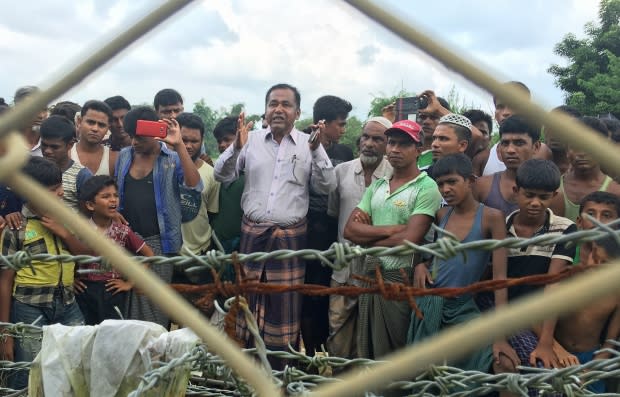
Victims and a variety of outside investigators accuse Myanmar's military of planning the attack on the Rohingya minority in what the UN and human rights groups describe as a textbook example of ethnic cleansing.
Myanmar says its forces were acting to protect citizens against terrorists who operate among the Rohingya, a population many in this country consider to be illegal immigrants — outsiders they call "Bengalis" despite the fact they've lived in the country for generations.
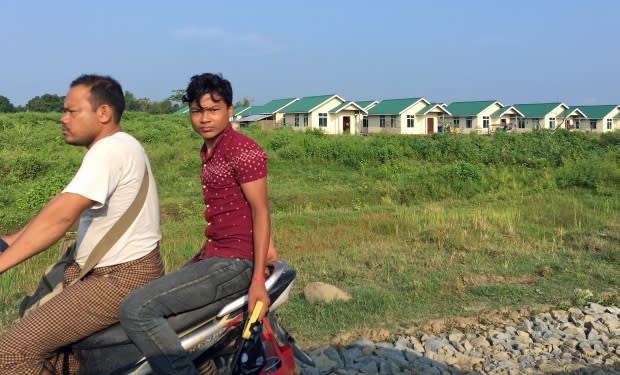
The exodus of more than 700,000 Rohingya, the majority of whom fled on foot north to Bangladesh, has altered Rakhine, a long-neglected state twisted by poverty and internecine tension. Conditions are so hostile, the exodus quietly continues even now.
And recent developments on the ground have raised concerns that the sudden, gaping absence is being entrenched.
On a rare media tour of northern Rakhine, several construction projects could be seen in among the paddy fields, with new blue-roofed housing standing out in the lush green. Men were busy working under the hot sun to expand the roads. All of it, local officials insist, in an effort to develop a poor state for the benefit of all its ethnic groups.
Also transformative to Rakhine state is the sheer number of villages that have disappeared, seemingly burned and bulldozed systematically. UN estimates put the destruction at 360 villages, and many of their remnants could be seen as the convoy of journalists drove out of Inn Din, heading farther north in the killing zone.
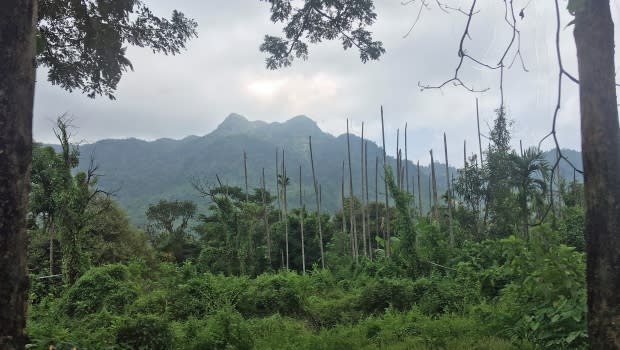
Crowds of topless coconut trees could be spotted from the road, each charred thicket marking the site of an eviscerated village.
A large expanse overgrown by green and dotted with tree stumps is all that seemed to remain of Chein Khar Li, a village where Human Rights Watch says 700 buildings were burned down.
The village's location could only be confirmed with the help of a map app.
'No genocide happened here'
The tour was organized by Myanmar's Ministry of Information and offered only fleeting glimpses of the region. There were no stops at any destroyed villages that were once home only to Rohingya Muslims, despite several requests from the journalists, including CBC News.
Those villages were swept up in a murderous rampage that likely killed more than 10,000 Rohingya, according to Doctors Without Borders.
The violence started when a militant Rohingya group attacked a security post on Aug. 25, 2017, killing 12 security force members. The militant group, the Arakan Rohingya Salvation, or ARSA, is also accused of a massacre of Hindus in the ensuing violence.
However, a growing body of evidence collected by various rights groups suggests the security forces may have been planning a campaign of violence against the Rohingya long before the security post killings.
A UN fact-finding mission concluded the campaign of murder, sexual assault and dislocation had genocidal intent and that the military's top brass should be put on trial.
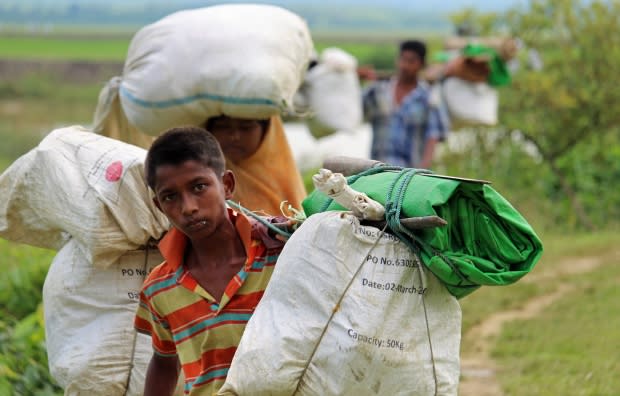
Myanmar officials didn't allow the UN fact-finders into the country and reject their conclusions. The government tells an alternative story, partly through highly controlled trips to the region where the atrocities unfolded.
"No genocide happened here," U Myint Khaing, administrator of Maungdaw Township, said at a briefing for journalists.
He blamed the torching of villages and the displacement of hundreds of thousands of people on ARSA.
"If there's a genocide … why are Muslims still here?"
'Cementing the expulsion'
Yet the officials' own statistics show just how stark the demographic transformation has been: Half a million people have fled the Maungdaw district of northern Rakhine, said U Ye Htoo, the district's deputy director.
The district was once 90 per cent Muslim: farmers, traders, labourers, rickshaw drivers. The UN Refugee Agency says more than two-thirds of refugees sitting in the camps of Bangladesh come from Maungdaw.
The local officials, who also use the term "Bengali" to describe Rohingya, insist they're working to repatriate them under an agreement reached with Bangladesh.

Officials said two reception centres and a transit camp that can hold some 25,000 people have been built in Rakhine to accommodate returnees. A new village plan is also being implemented, under which nearly 1,500 new homes have already been built for returnees of all ethnicities, they said. The government says its repatriation plan does include a cash-for-work program to help villagers participate in the rebuilding.
With little free access to Rakhine, it is difficult to verify the intent of such activity. There have been accusations the construction is appropriating abandoned Rohingya land. Others question why the Rohingya aren't simply allowed to rebuild their own villages.
The UN's special rapporteur for human rights in Myanmar, Yanghee Lee, recently reported she was "extremely worried that the activities of the civilian and military authorities in northern Rakhine state are cementing the expulsion of the Rohingya, as development projects fundamentally alter the landscape."
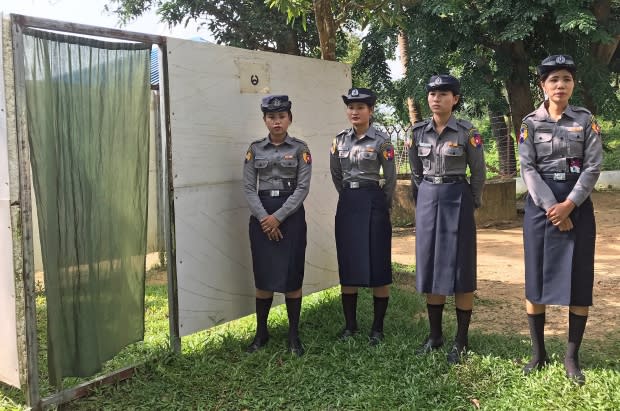
There is also international skepticism about Myanmar's willingness to properly investigate the crimes committed on its soil, given the main accused is the military, which shares in ruling the country. And there is skepticism, too, about Myanmar's desire — and ability, for that matter — to repatriate the refugees.
"There are no people and there are no villages," said Nicholas Bequelin, East Asia director for Amnesty International.
"That tells volumes about the fact that the Myanmar state, to a certain extent, is satisfied with the outcome of this campaign, which has been the forced deportation of hundreds of thousands of people across the border to Bangladesh."
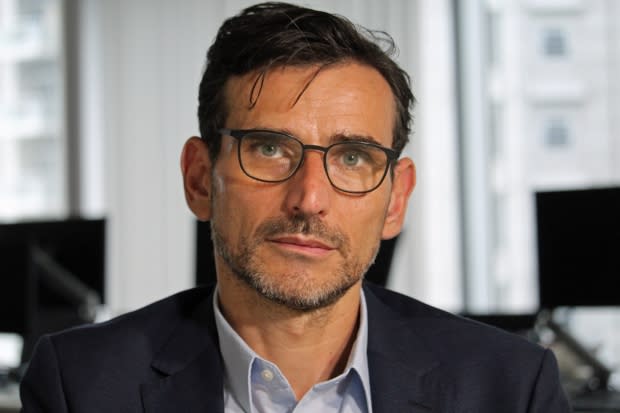
Myanmar says it is committed to repatriation, but many in the majority-Buddhist country believe Rohingya do not belong — and nationalist Buddhists are constantly on the lookout for signs Myanmar's leaders are siding with religious minorities over the majority.
In parts of northern Rakhine, Muslims form the majority and ethnic Rakhine Buddhists have long felt threatened. Many believe the world has ignored atrocities committed by Muslim militants.
"Rakhine Buddhist killing Muslims, it's just one out of a hundred," said Taw Kin Ten Ji, a 52-year-old resident of Inn Din. "The difference between Rakhine and Muslim is that Rakhine Buddhists are kind and feel for others."
Empty reception centre
In a dark hall with a low ceiling in a village near the town of Maungdaw, journalists were introduced to Marmak Shaw Yee. He said his family of six returned from Bangladesh on foot, a story he also told a state English-language newspaper here in September. In both cases, he echoed the officials' view that ARSA was to blame for the crisis.
"My properties and house were burnt. We are living like beggars," he said. "I was so angry. And it happened because of ARSA.
"That's why I'm talking to the media — so the world knows."
However, at a reception centre at the border with Bangladesh that's staffed by officers ready to welcome returnees, there were none for journalists to meet.
As of the last week of September, a total 171 people had returned from Bangladesh since the centre opened in January.
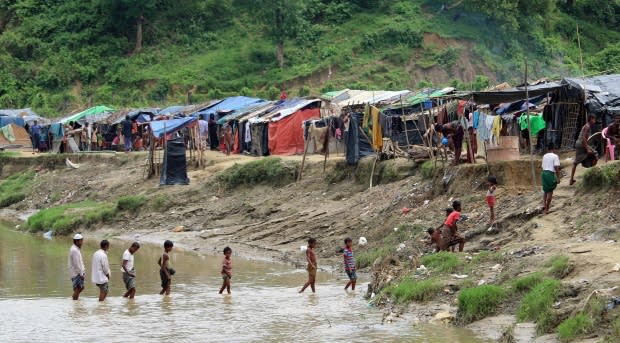
How committed Myanmar is to repatriation depends on which government official is speaking. There is strong opposition in some government corners — especially because so many in Myanmar's population oppose it.
In a report released this week, the UN Refugee Agency said conditions do not yet exist for a safe and dignified return for the displaced. Lee, the UN's special rapporteur, said any repatriation is "extremely premature."
Some critics doubt it is realistic at all in a country where a government official doesn't think twice before describing the exodus as "Bengalis" simply "going home."
'We are afraid'
More than 5,000 Rohingya Muslims live in a mishmash of tents and wretchedness that's fed by rain and unrelenting heat, with nothing more than a barbed wire fence separating them from what had been their homeland for generations.
They are stuck in a no man's land at the border between Bangladesh and Myanmar, but returning to their old lives isn't an option.

The situation is not safe for Rohingya in Myanmar, said Dil Mohammed, who also spoke to CBC last year inside the no man's land on the Bangladesh side. "We are afraid [for] our life," he said in halting English, this time speaking to the journalists on the tour, through Myanmar's border fence.
Dil Mohammed explains why the Rohingya stuck in a no man's land between Bangladesh and Myanmar are wary of returning to their home state:
At minimum, he said, Rohingya must be granted citizenship and freedom of movement, and compensated for their losses.
But these are longstanding demands that are unlikely to be met in the short term.
"So, in effect, that means that Myanmar would have to dismantle a system of ethnic segregation, apartheid-type, and we are not seeing any of this at the moment," said Bequelin.
A good first step to give exiles confidence they won't be targeted again would be to prosecute the crimes that led to the exodus in the first place, he said.
The UN has created an international group to begin collecting and preserving evidence for a potential future trial.
But in Myanmar, both civilian and military leaders have bristled at the idea of outsiders coming to investigate.
The country's de facto leader, Aung San Suu Kyi, recently defended a government-commissioned investigative panel as credible, independent — and quite enough.
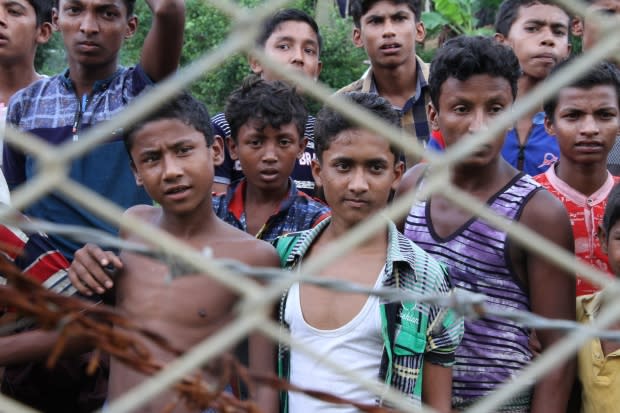
It is comprised of hand-picked panellists, including one from Japan and another from the Philippines, and two more from Myanmar, including Dr. Aung Tun Thet. He was an economic adviser to the country's former president and an honorary professor at the University of British Columbia. He says outsiders do not appreciate the complexity of the situation in Rakhine and has said publicly he doesn't believe the violence there was systematic.
"I fear to portray [it] as religious or intercommunal issue might be going a bit too far," he told CBC News. He says it is partly a border security issue.
Myanmar won't assign blame because of international pressure, he said. "We would do it because we think it's needed. So it will be on our terms, at our pace, and whatever we think suits the whole nation."
'Hidden humanitarian crisis'
Also key to any repatriation effort will be how life evolves for those Rohingya who remain in Myanmar. Despite their hardships, Rohingya here and in Bangladesh stay in close touch on social media with their cellphones.
The UN Refugee Agency estimates nearly 500,000 remain in their own homes in Rakhine — a population that was already reliant on humanitarian aid before the crisis.
The government barred most aid organizations last year after the violence erupted.
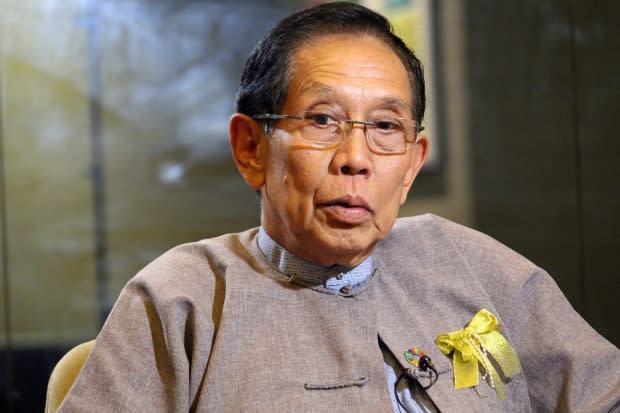
"I'm concerned that there's a hidden humanitarian crisis happening that we're unable to measure," said Pierre Peron, who has worked in Rakhine for five years with the UN's Office for Co-ordination of Humanitarian Affairs.
Last month, for the first time in a year, the government allowed some UN workers limited access to 23 villages in Rakhine to try to assess the needs. The UN's first report released last week says all communities are finding it hard to put food on the table — partly due to fear and mistrust.
The military extends deep into society, even at the village level.
While some people are limiting their movements because they fear neighbouring communities, "others, particularly the Muslim communities, are not allowed to move freely," said UN spokesperson Andrej Mahecic.
It didn't take long for the fear and mistrust to surface in a village in northern Rakhine that government officials on the tour had held up as a model of inter-ethnic harmony.
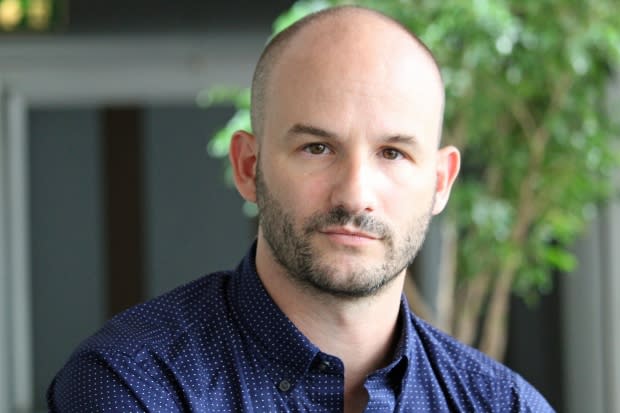
A Rakhine Buddhist resident said the recent unexplained killing of a farmer has people worried about the possibility of another outbreak of violence.
"If there's a problem, we run," he said.
A Rohingya Muslim resident complained about the constraints he lives under. "We don't have citizenship here. How can we be happy if we're not equal?"
Myanmar observers are concerned it would take very little for violence to erupt again. The UNHCR says conditions are hostile enough in the north that, even now, people are still leaving.
But the most vulnerable inside Myanmar are some 130,000 Rohingya who are kept against their will in camps for internally displaced people.
Stuck for six years
The Thet Kae Pyin camp near Sittwe, the capital of Rakhine state, is no place for children but it is full of them: children carrying toddlers, or playing in muddy lanes lined by ramshackle homes.
Many Rohingya Muslims were forced into camps in 2012, when the rape and killing of a Rakhine Buddhist woman sparked violence that escalated into riots and the torching of Muslim property and mosques.
Some at Thet Kae Pyin are confined just down the road from where they once lived. Military checkpoints control who comes in or out. Camp-dwellers must get permission even to go to the hospital in Sittwe. Children aren't being schooled in Burmese, weakening the prospect of their reintegration.
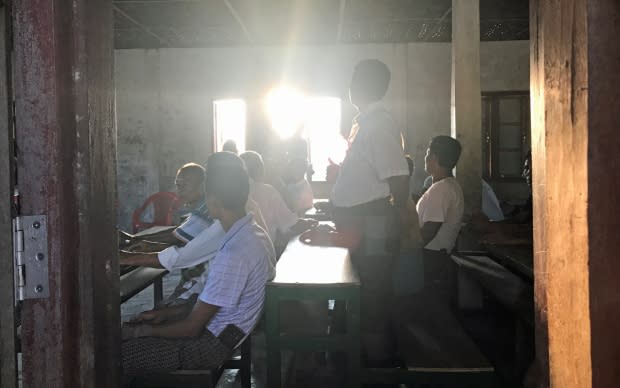
Like most other Rohingya in Myanmar, they are denied citizenship and freedom of movement. Some have been waiting to move back to their neighbourhoods for more than six years.
The government says it plans to close the camps, but there is no clear plan for what comes next. In the meantime, the people inside have become hopeless, Peron said.
"They're not able to leave the camp," the UN official said. "They're not able to go find work."
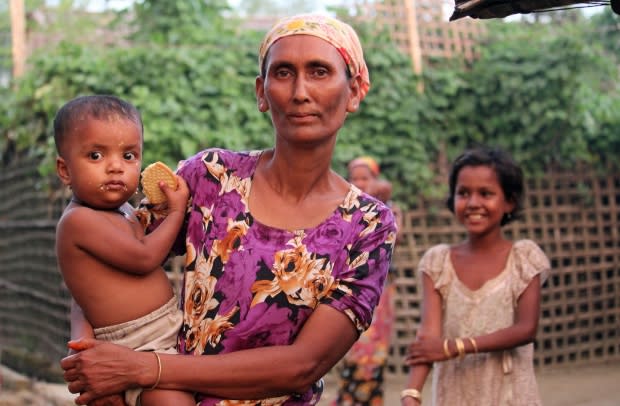
The camp's filthy alleys are warning to anyone outside the country even considering a return on Myanmar's terms.
"It's quite understandable that the Rohingya in Bangladesh are reluctant to come back if they're going to go to a camp," Peron said.
In broken English, one man in Thet Kae Pyin summed up what's needed most: "Please, freedom."
Nahlah Ayed reports from inside Myanmar a year after more than a 700,000 Rohingya were driven out:

